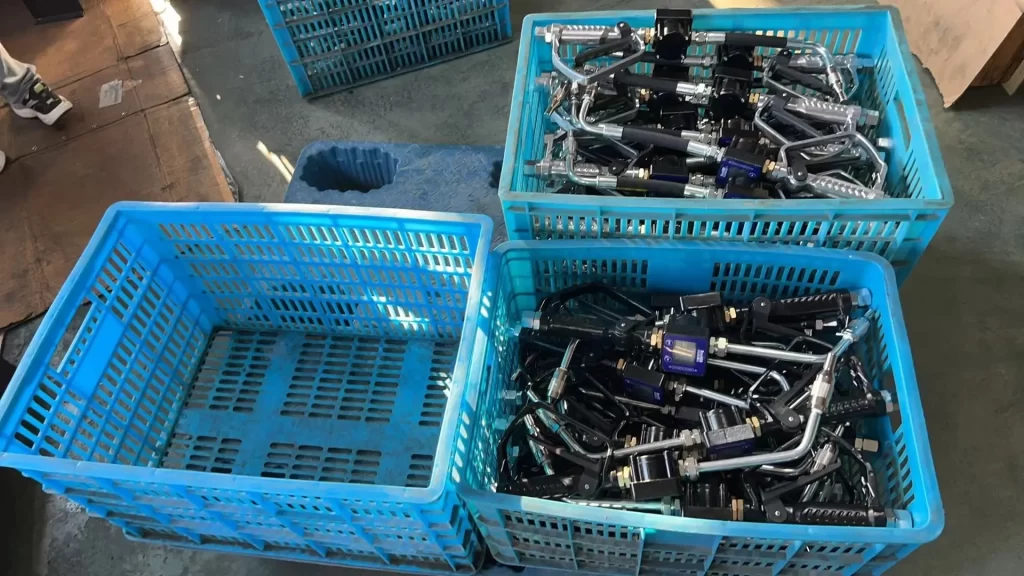Understand the key types of lubrication metered nozzles and their applications. Learn about mechanical, digital, and auto shut-off nozzles for accurate and adjustable lubrication.
Greases and oils keep industrial equipment running smoothly. But without proper nozzle control, too much or too little lubricant applied can lead to failures. Metered nozzles address this through precise, adjustable lubrication.
1. Metered nozzles dispense precise lubricant quantities to prevent under/over-greasing
2. Mechanical, digital, and auto shut-off designs provide adjustable control
3. Matching flow rates to lube points enhances reliability and efficiency
Let’s overview key metered nozzle designs and proper installation.
Unlike basic grease gun tips, metered nozzles dispense exact measured amounts of grease or oil per pump stroke. Flow rates are easily adjustable, then lockable to ensure consistency. This prevents under or over-lubrication for optimum equipment protection.
Grease enters the inlet, then passes through an internal piston metering mechanism before exiting the tip. Adjusting a screw or dial changes the piston stroke length to increase or decrease volume output per shot as needed.
Matching flow rates to lube points only takes moments. And once set, metered nozzles ensure the same grease quantity is applied every time, regardless of technician. This simplifies standardizing lubrication practices.
Here are some of the most common types of lubrication metered nozzles:
The most affordable metered nozzle style features manual screw adjustments for setting grease output. An internal spring-loaded piston proportions each stroke’s displacement. Lock nuts retain the adjuster setting.
While requiring tools to tweak, these rugged nozzles work reliably across high-cycle applications. Their steel components also withstand harsh shop environments.
Upgrading to digital nozzles adds an LCD display for viewing the exact flow rate setting. This allows precision adjustment in precise increments.
Digital nozzles eliminate guessing work, while making flow tweaks simpler. Their electronics also enable advanced features like dispensing counting and optional data logging.
Time-based and count-based auto shut-off nozzles automatically halt lubricant flow after a set duration or number of cycles. This prevents over-greasing equipment in set lube routines.
Once programmed, automatic nozzles provide hands-free operation. Their consistency also minimizes missed lube points.
Install metered nozzles just like standard grease couplers using whip checks or thread fittings. Ensure connections are fully tightened to avoid working loose.
Carefully set the lubricant output starting on the low end, then gradually increase while checking equipment temperatures. This ensures optimal flow rates without over-greasing components.
Always verify metered nozzle adjustments on sample bearings before broadly rolling out. Periodically confirm outputs to ensure consistency.

Uncontrolled manual lubrication wastes grease while risking equipment protection. Affordable metered nozzles provide adjustable, consistent flow control for optimum efficiency.
Matching metered nozzle outputs to the lube point guarantees proper lubrication every stroke. This prevents failures while saving grease expenses long-term – easily justifying upgrading from basic open tips.
Contact Aocheng today to explore how advanced metered lubrication nozzles can drive reliability and bottom-line savings!




